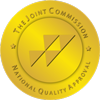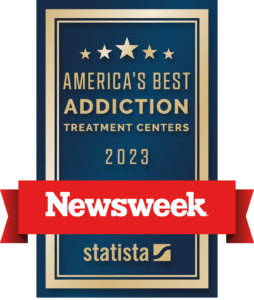Alcoholism and Depression: One Feeds the Other
There is a strong link between alcohol use and depression. These are two conditions that often occur together, and one can make the other worse in a continuous cycle if not treated.
Some people like to “drown their sorrows” when a stressful event occurs. A drink or two when you’re stressed out or sad is one thing, but it’s quite another if you need a drink every time a problem crops up. That could be a sign of alcohol dependence. Drinking can cause or worsen symptoms of mood disorders. Depression may even cause people to begin drinking large amounts of alcohol.
The question here is, does regular drinking lead to depression, or does depression lead to alcoholism? Both are possible. Research shows that depressed kids are more likely to have a problem with alcohol later in life. Teens who have had a problem with major depression are twice as likely to start drinking compared to those who haven’t.
Among individuals whose alcohol use does not rise to the level of an alcohol use disorder, drinking can have a harmful effect on depression symptoms. The evidence is of a strong association between the level of drinking and the level of depressive symptoms.
Depression First
Depression is a mood disorder and causes feelings of sadness, anger, loss, and emptiness. People with depression lose interest in activities and social events that once brought them happiness. Daily tasks may become a struggle. More than 300 million people experience depression worldwide.
Nearly one-third of people with major depression also have an alcohol problem, and most of the time, the depression comes first. Women are more than twice as likely to start drinking heavily if they have a history of depression and are more likely to overdo it than men. Alcohol may be a form of self-medication for depression. The temporary effect of alcohol may relieve some of the symptoms.
Unfortunately, drinking makes the depression worse. People who suffer from depression and drink too much have more frequent and severe episodes of depression. They are also more likely to think about suicide. Heavy drinking can also make antidepressants less effective.
Symptoms of Depression:
- Feeling worthless
- Sadness
- Fatigue
- Loss of interest in hobbies and activities
- Lack of energy for daily tasks
- Difficulty concentrating
- Guilt
- Substance use
- Suicidal thoughts
Alcoholism First
People with AUD (alcohol use disorder) may drink too much, too often and are often unable to stop once they’ve begun.
Because alcohol is a depressant, that means that any amount you drink, it is likely to make you feel “down.” Drinking a lot can harm your brain and cause depression. When you drink too much, you are more prone to make bad decisions. Spending more than you can afford, losing a job, and ruining a relationship is likely to make a person feel depressed and actually drive the need to drink more.
Heavy drinking may increase the risk of mood disorders by 2 to 3 times in comparison to those who never drink alcohol. A study in 2002 showed that alcohol use in childhood, adolescence, or early adulthood significantly predicted Major Depressive Disorder (MDD) in the late twenties. Adult males who were problem drinkers initially were more likely to develop MDD at the 6-year follow-up than those who weren’t problem drinkers.
Symptoms of AUD:
- Drinking too much at any one time
- Drinking frequently even daily
- Continually craving alcohol
- Sneaking alcohol
- Continuing to drink despite negative consequences
- Avoiding activities to drink
- Continued drinking despite symptoms of depression
Alcoholism and Depression: A Deadly Mix
Major depression and alcohol dependence are the most common psychiatric disorders in people who commit suicide.
Alcoholism and depression are a common co-occurrence (dual diagnosis) that can be a self-reinforcing cycle that is difficult to break free of and can become a deadly mix. Although alcohol produces a good mood at first, it’s depressant properties carry over into the individual’s mind and contributes to continuing depression.
A person suffering from MDD and abusing alcohol has a much higher risk of attempting and succeeding in taking his own life. Alcohol misuse exaggerates depression, increases impulsive actions, and impairs judgment. This explains its association with painful suicide methods.
Alcohol is frequently found in suicide methods involving driving a vehicle or overdosing. A person diagnosed with both disorders should be closely monitored by a health professional.
Is it Genetics or Environment That Causes Alcoholism or Depression?
Some factors that contribute to one or both conditions are:
- Genetics. People with a family history of alcoholism or depression puts a person at risk for developing either illness.
- Personality. Research has shown that people with a negative outlook on life and low self-esteem are more likely to develop depression or AUD.
- Personal history. Individuals who have experienced abuse, trauma, and relationship problems are at higher risk for depression and AUD.
Treatment for Alcoholism and Depression
Despite the frequent co-occurrence of alcoholism and depression, research on how to treat both at the same time is relatively new. Traditionally, the approach to the treatment of depression and alcoholism is siphoned off into different departments.
“Scientists aren’t sure whether alcohol is being used to self-medicate a pre-existing condition of depression, or depression is a consequence of alcoholism.” “It is critical to weave in treatment for depression in chemical dependency patients.” “Also, on the flip side of that to begin to more sensitively treat problematic or risky drinking in depression patients,” said Stephanie Gamble, PhD., an assistant psychiatry professor at the University of Rochester Medical Center.
According to Gamble, approaching the conditions simultaneously may turn out to be the most effective way to treat both. “When folks would show up at mental health centers with a substance use disorder, a referral is often made for them to go and get counseling first—get cleaned up and then get your depression treated,” explained Gamble.
The problem with this approach is that both conditions are so intertwined that the individual’s depression can undermine the attempt at recovery. For example: if the person needs to go to therapy three times a week but is too depressed to get out of bed, it ruins the chance of success in an outpatient addiction therapy program.
More About Treatment
Charles O’Brien, Ph.D. M.D., an addiction psychiatrist at the University of Pennsylvania School of Medicine, treated 170 people in a controlled study. Participants were broken into groups that were given a) Naltrexone, a drug that reduces alcohol cravings, b) Sertraline, a drug that treats depression and anxiety, c) both drugs, or d) neither drug.
After 14 weeks, it was found that the group that received both drugs had higher alcohol abstinence and a more extended average period before relapse. “The best results occur when you treat both simultaneously,” concluded O’Brien. “The brain is the cause of all of this,” he said. “Addiction is a brain disease. Depression is a brain disease.”
Treatment Challenges
The complex relationship between AUD and depressive disorders makes diagnostic assessment difficult. Clinicians cannot be sure whether the depressive symptoms are the result of a primary depressive disorder or the result of chronic alcohol misuse. It is also difficult to predict whether the depressive symptoms will be the same after the alcohol use changes or vice versa. Further, the person’s reporting of his drinking and depressive episodes may not be reliable. Several treatment approaches have been proposed:
- Sequential—Historically used most frequently. Depressive symptoms are not addressed until there has been a period of abstinence from alcohol. This method is useful when the person goes to a hospital for the acute increase of one disorder e.g. when the individual is suicidal or experiencing medically complicated withdrawal. In the absence of a crisis, trying to address co-occurring disorders, sequentially may fail to recognize the reciprocal connection between the disorders.
- Parallel— Different treatment teams of clinicians treat both problems simultaneously. It can be challenging to coordinate care in the parallel approach since, without clinicians working closely together, individuals may receive different feedback on their AUD and psychological symptoms from their different treaters, frustrating or confusing the person.
- Integrated—A single clinician or treatment team manages both depressive disorder and the AUD simultaneously. Having one clinician or treatment team under one roof to work with the person simultaneously on the depressive disorder and the AUD can improve communication with him or her. It also improves convenience for the individual, which improves the chance of retention in treatment.
Treatment Therapies
Pharmaceutical—FDA-approved medications for the treatment of AUD and co-occurring depression. Clinicians need to determine whether the individual should stay in a hospital for detoxification or psychiatric instability before prescribing pharmaceuticals. Professionals should monitor the administration of meds for depression and AUD. This helps to ensure safety and effectiveness while also watching for drug interactions.
Psychosocial
- Motivational Enhancement Therapy is a method of getting people to realize their own motivations for getting better.
- Cognitive Behavioral Therapy in the treatment of AUD and co-occurring depression can increase the number of days abstinent and decreasing depression symptoms and severity.
Relapse Prevention Therapy—RPT helps individuals to develop strategies for managing potential relapse situations.
Contingency Management—CM is based on the principle that substances are associated with certain rewards, and that alternative rewards can be used to replace the rewards from substance use.
12-Step Groups—Twelve-step support groups produce positive effects on drinking patterns and may have a beneficial mood effect for depressed members.
Alcoholism and Depression: What to Do Now
If you think you have a problem with either one, don’t ignore it any longer. Alcoholism and depression are both serious problems. Talk to a doctor or psychologist. There are many medication choices to treat depression. Some drugs curb alcohol cravings and the desire to drink heavily.
Your release from this cycle of depression and alcohol, alcohol, and depression is just a phone call away. Reach out to us today and speak to a qualified specialist. Sana Lake is the leading recovery center in the Midwest. We treat substance use and mental health disorders as chronic diseases and design personalized care to help you meet your recovery goals. Begin healing with a phone call.



